Section II - Performance Tests, Synthetic
In this section of testing we cover the synthetics. These are tests that run a scripted sequence of internal APIs or that use another installed application to perform a series of scripted events. They are great in that they can provide reproducible results across various platforms. On the down side, synthetic tests can be fooled with driver tweaks and optimizations. In some cases it is necessary to rename the .exe file to something generic to discover if this is the case. In any event when this is needed (when a test shows a drastic difference in performance over the renamed exe) we will note this and show both results for comparison.
PCMark7 -
PCMark7 is the latest general performance test from FutureMark. As each generation of this benchmark has evolved and developed we have watched them add more and more realistic tests to this suite. With this generation we find more media tests, (audio and video transcoding) moving of large files, multiple web page rendering, and much more (the even added DX10 gaming). We use the Overall Performance and Common Usage suites in our testing.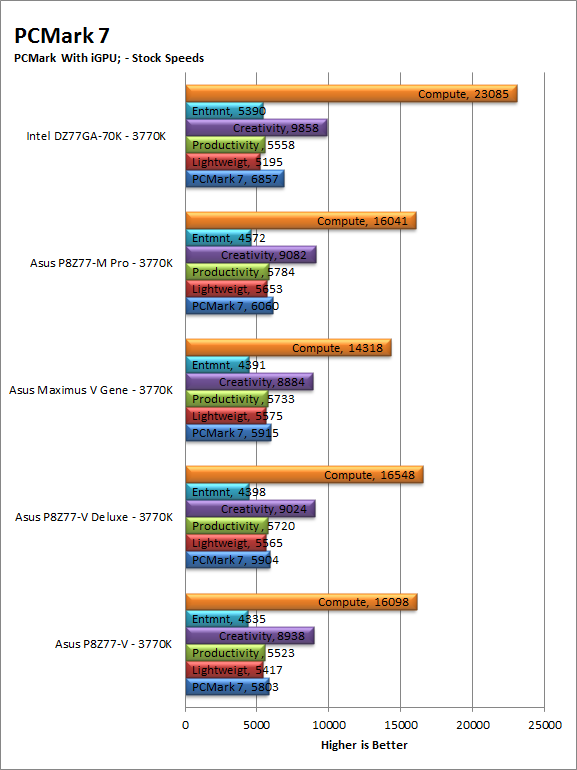
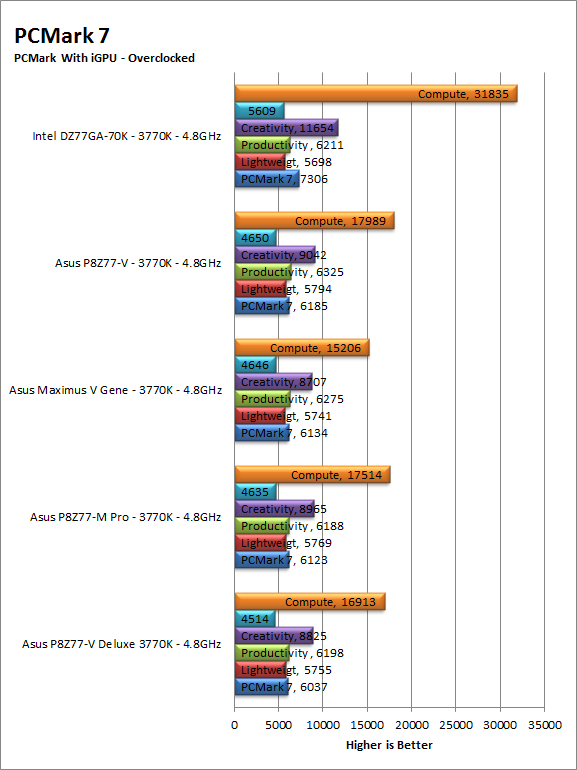
Under the stress of PCMark07 the P8Z77-V Deluxe does fairly well coming in a few points behind the Intel DZ77GA-70K when we had the EAH 5870 V.2 in the system. With just the GMA 4000 to push graphics the –V Deluxe drops back a few places though and comes in just behind the Maximus V Gene. Even with its place in the ranks we still expect to see good performance in the rest of our tests and you should not have any issues in general computing. 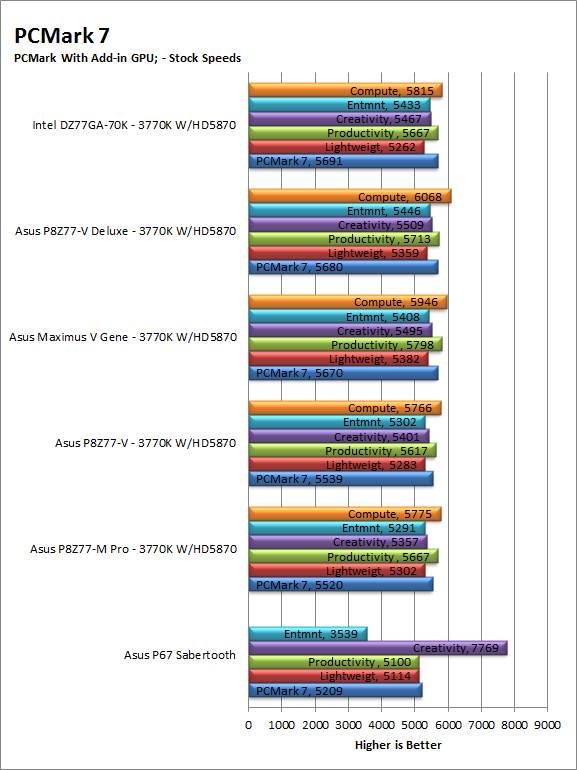
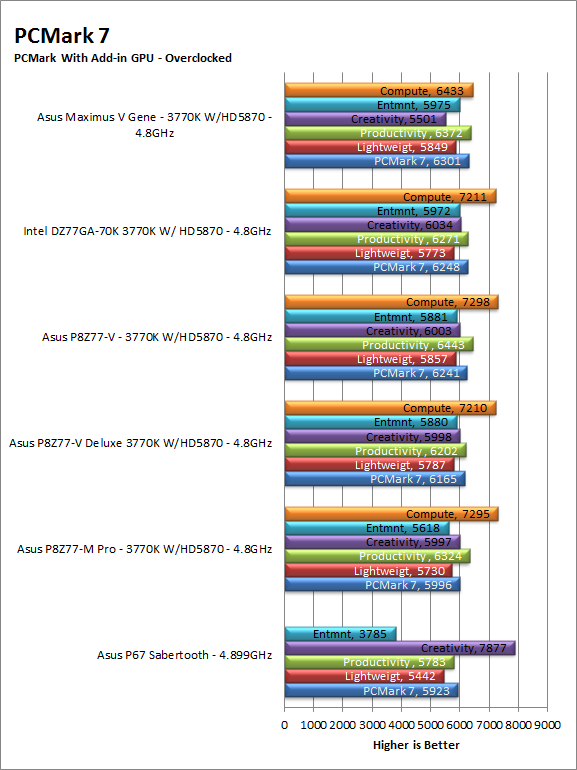
3DMark 11 -
3DMark 11 is the other Futuremark test that we run on our motherboards. This test simulates the typical tasks that a GPU (and system) would have to perform to provide you with a good gaming experience. It is based on the DX9, DX10 and DX11 engines but can only be installed on Windows Vista or later. The suite of tests covers DX9, DX10, and of course DX11 rendering; it also covers AI computations and physics. That’s right I said Physics the latest version of 3DMark uses a Havok physics engine. This removes the advantage that nVidia had with 3DMark Vantage. 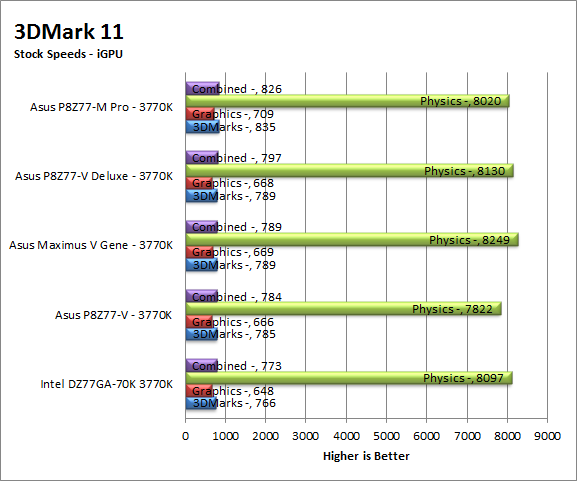
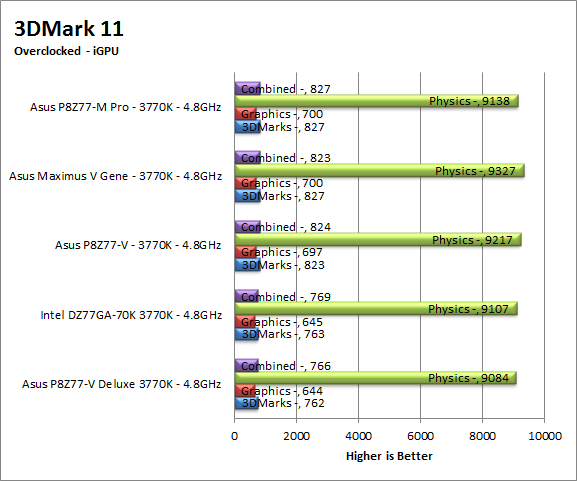
In 3DMark 11 we find the –V Deluxe back up at the top of the group. At when we had the EAH 5870 in the system. Under the power of the GMA 4000 we find that the –V Deluxe drops back a little although it is not that far behind the leader at stock speeds. This should mean decent gaming performance even with the GMA 4000 although you would not want to use it for high-end games. 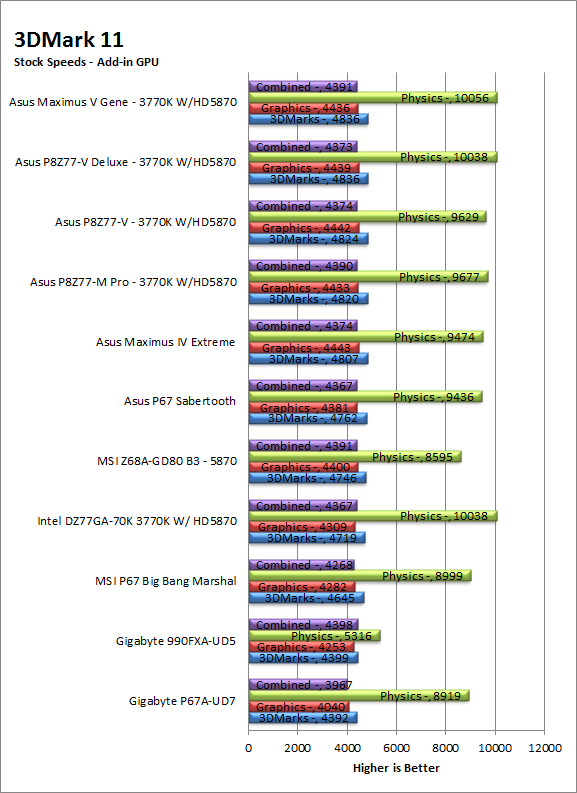
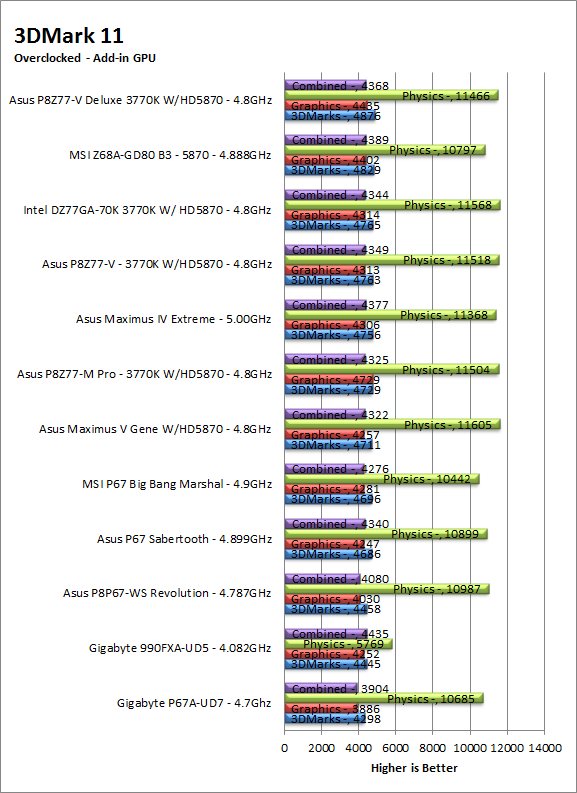
HyperPi 0.99b -
HyperPi is a front end application that allows you to easily run multiple instances of the SuperPi application. SuperPi, for those that are not familiar with it, is an application that measures the time it takes to calculate the number Pi out to as many as 32 million places. This calculation is then checked and run multiple times (up to 24 for a 32M run). This test stresses the CPU, Memory and HDD as data is handed off between the three. If there is a weak link, HyperPi will show it. For our testing we run the 32M test on as many cores (and threads) as the CPU has available. The slowest CPU time is then recorded. 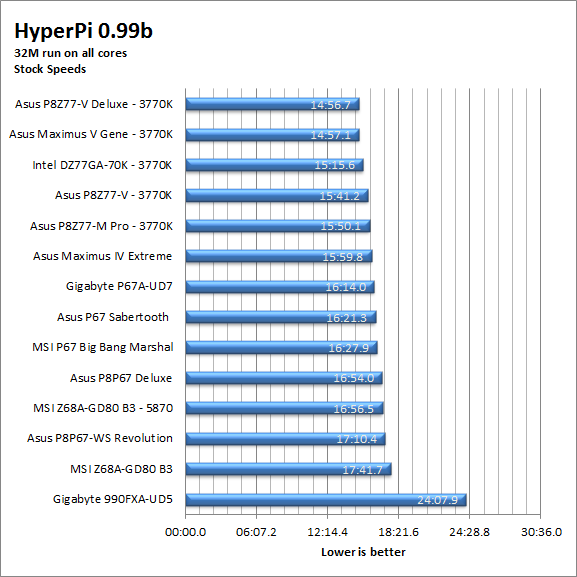
The –V Deluxe shows off its number crunching ability here with our HyperPi 0.99b testing. This handy little test shows us that the CPU to Memory to HDD paths are quite quick. This should mean good transcoding, rendering and editing performance with the right hardware. 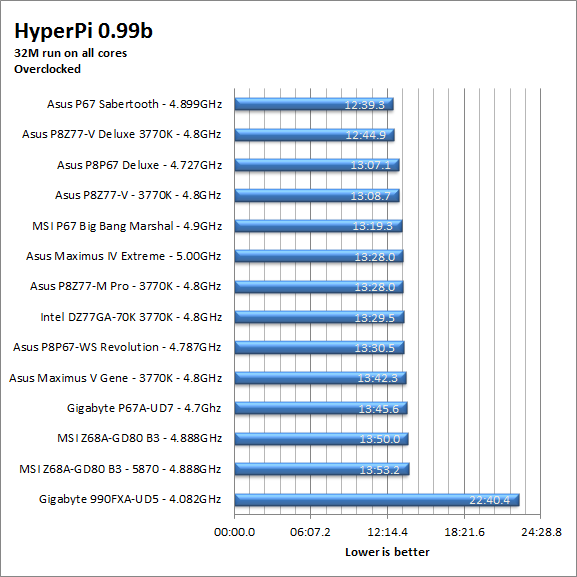
Cinebench R11.5 -
Cinebench R11.5 is the 11th release of Maxon’s rendering test. This test is based off of the Cinema 4D engine, which is one of the industry standard tools for digital animation. It is a powerful product with many different modules that can be “plugged” into it to increase its effectiveness. With Cinebench you get to see how your computer would do using this application. There are two tests; one tests the CPU’s ability to render an image across multiple cores or threads. The other tests your systems ability to handle OpenGL based rendering.
| Cinebench CPU Rendering Stock | Cinebench CPU Rendering Overclocked |
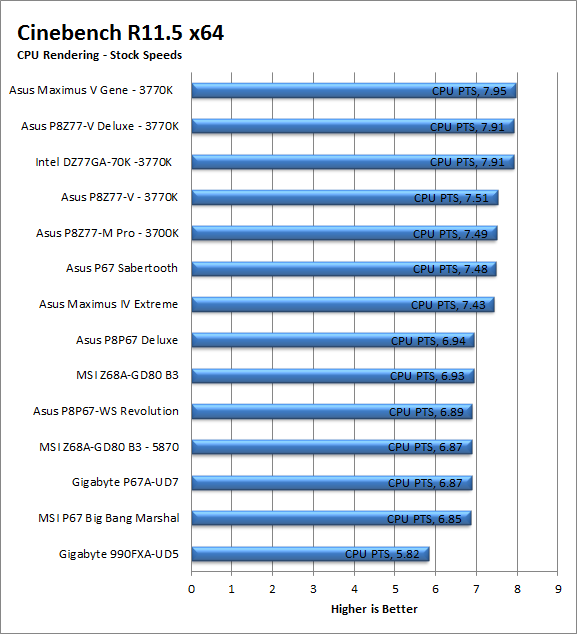 |
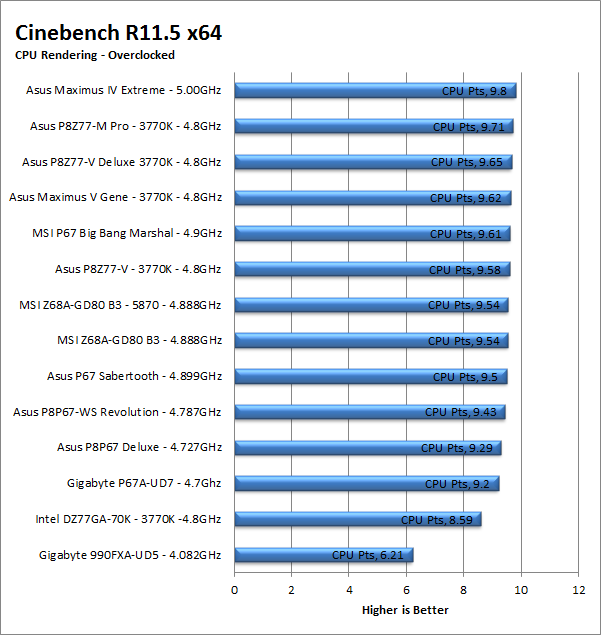 |
The –V Deluxe also does very well with Cinebench R11.5, at least at stock speed. When we overclocked the board we found that the performance dropped off a little. Still 9.65 is a nice number in this test and shows that the –V Deluxe could handle professional work if you used it for this.
| Cinebench OpenGL Rendering Stock | Cinebench OpenGL Rendering Overclocked |
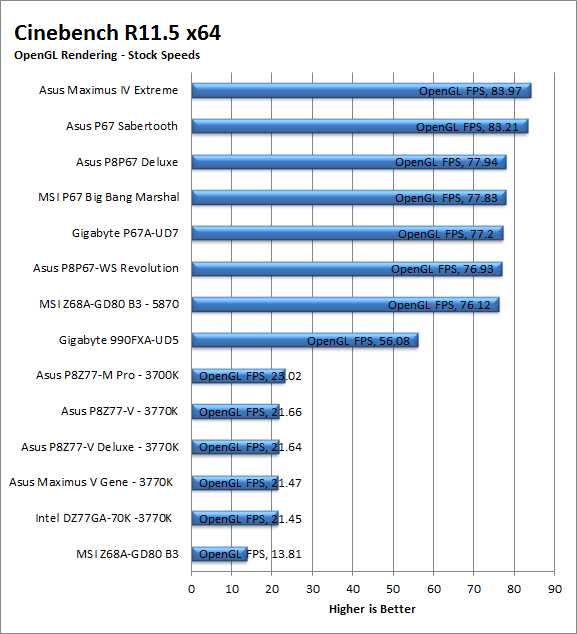 |
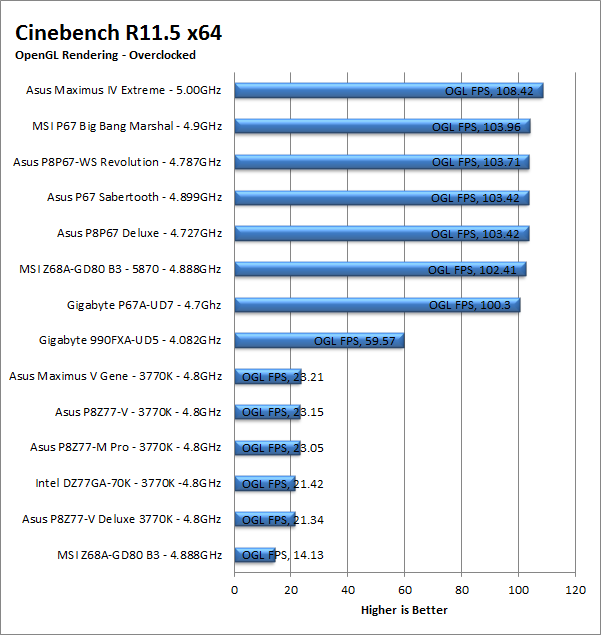 |

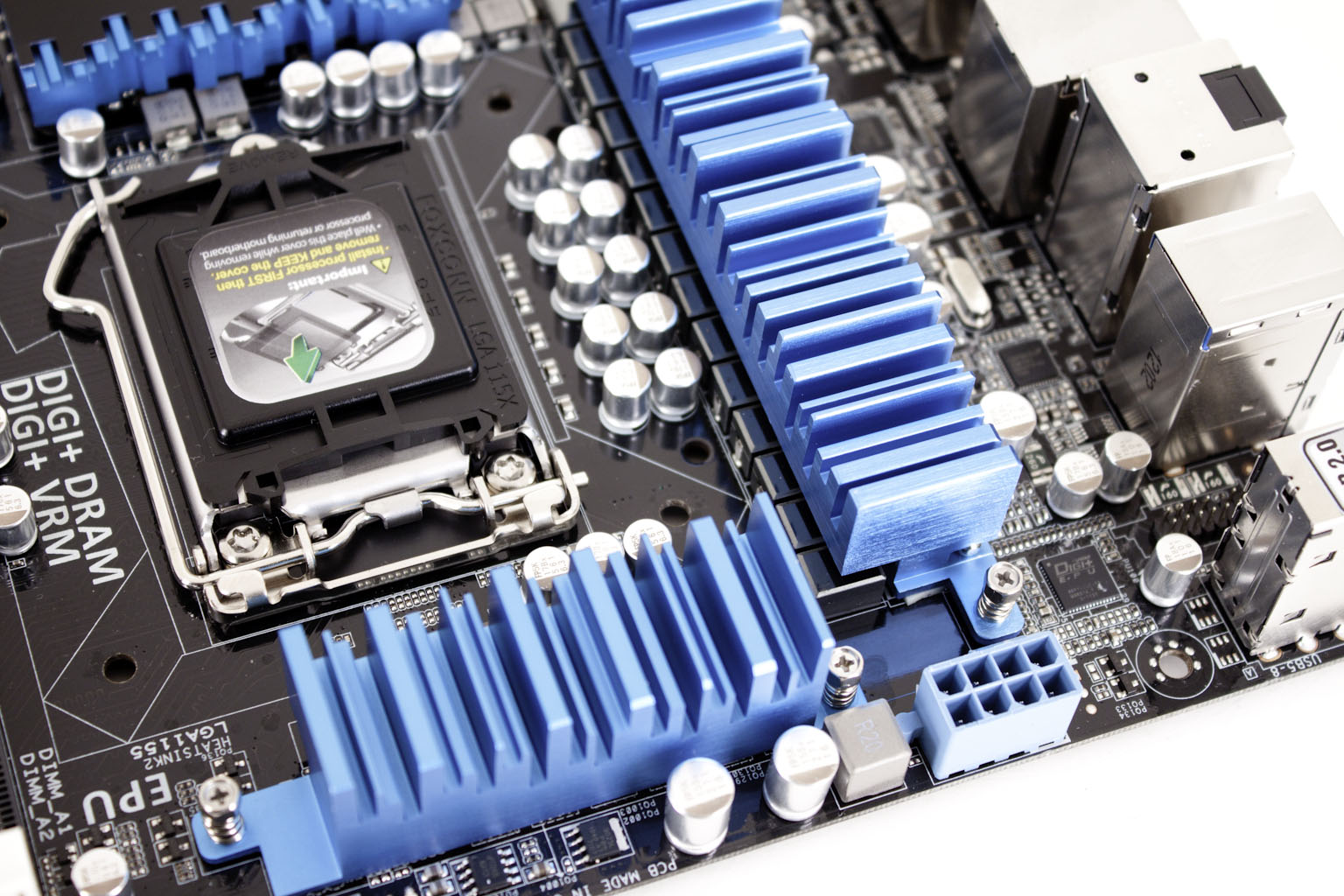 After what seemed like a long time we are finally getting into the full performance section of our review. The Asus P8Z77-V Deluxe is a board that really has quite a bit going on which makes properly covering everything something of a chore. You can check out our
After what seemed like a long time we are finally getting into the full performance section of our review. The Asus P8Z77-V Deluxe is a board that really has quite a bit going on which makes properly covering everything something of a chore. You can check out our 

